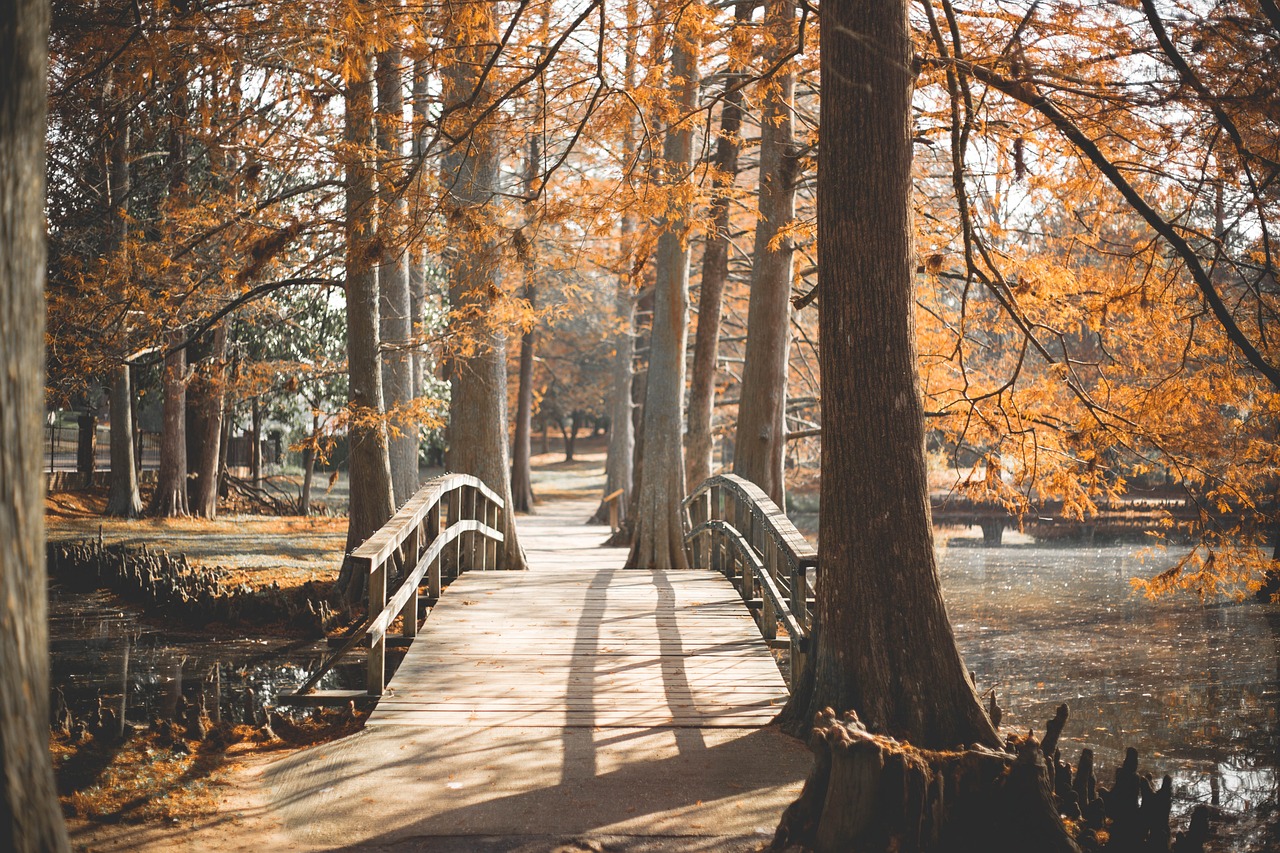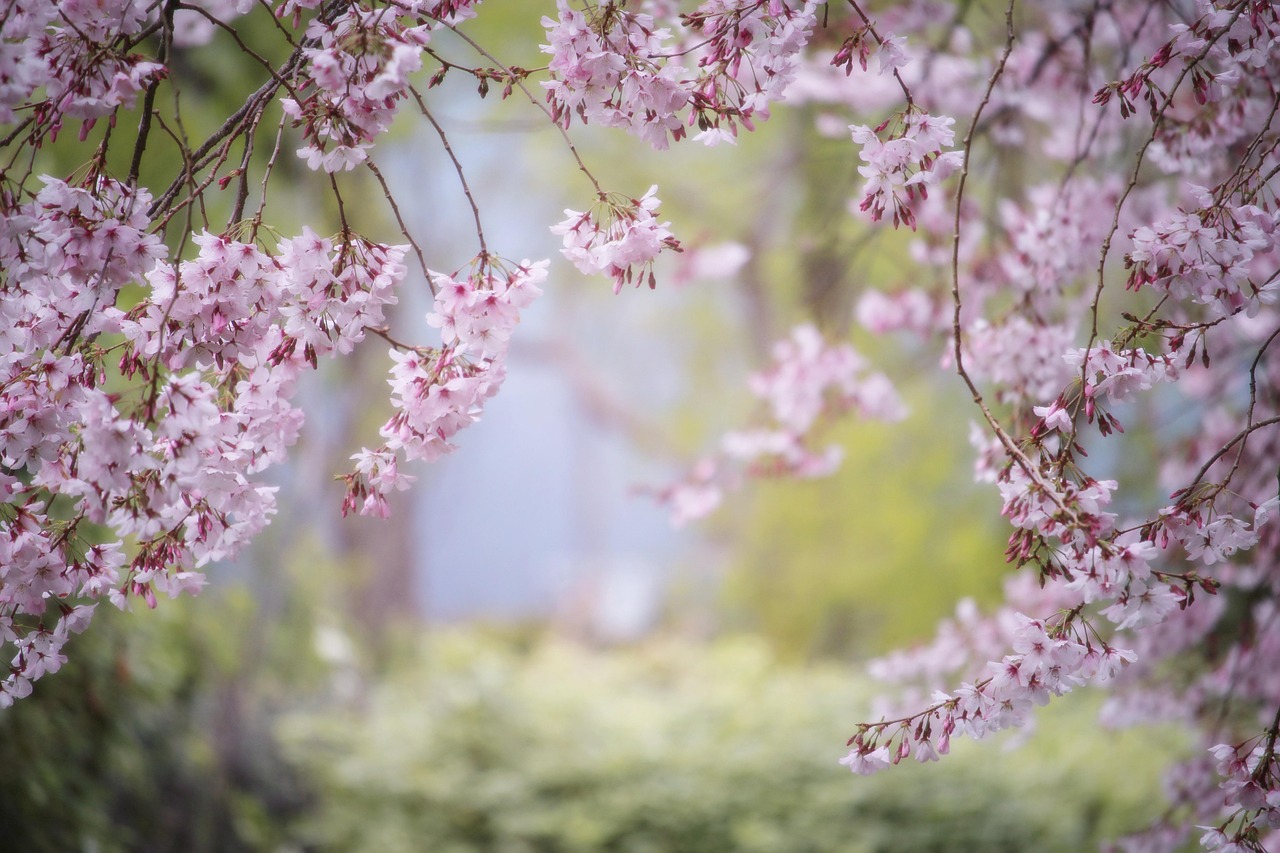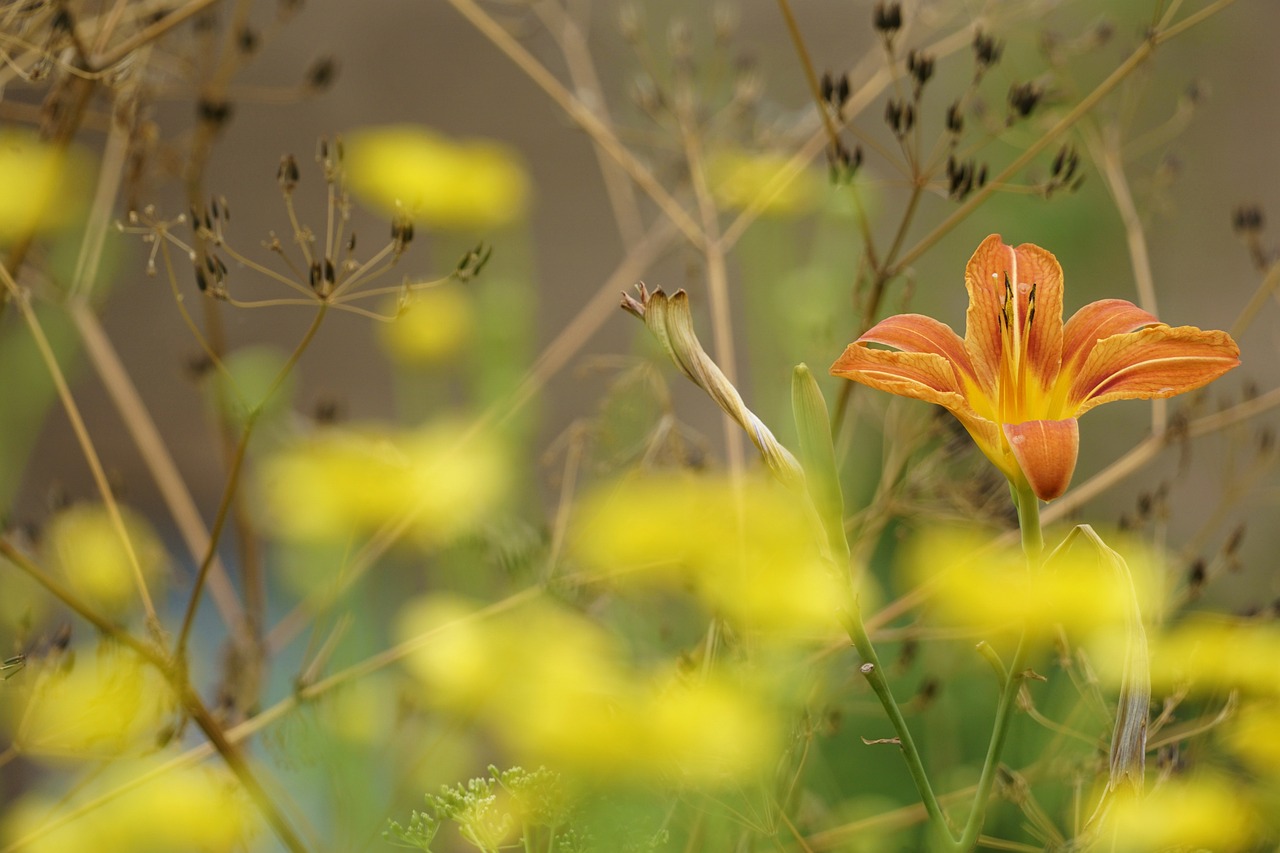Enchanting Fairy Garden Crafts for Kids
Have you ever wished to step into a world where magic meets creativity? Enchanting fairy gardens are the perfect way to spark that imagination in kids, allowing them to create their very own miniature landscapes filled with charm and whimsy. These delightful projects not only encourage artistic expression but also foster a love for nature and gardening. Imagine your child digging in the dirt, planting tiny flowers, and arranging little accessories, all while enhancing their fine motor skills and creativity. It’s like opening a door to a secret world where fairies might just stop by for a visit!
Creating a fairy garden is more than just a craft; it’s an adventure waiting to unfold. Each garden can be a reflection of your child’s personality, filled with their favorite colors, plants, and tiny decorations. As they embark on this magical journey, they’ll learn about the environment, responsibility, and the beauty of nurturing living things. Plus, it’s a wonderful opportunity for parents and kids to bond over a shared project that can be as simple or as elaborate as they desire.
To get started, all you need is a few basic supplies and a sprinkle of imagination. Whether it’s a small pot, a corner of the backyard, or even a repurposed container, the possibilities are endless. Kids can choose from a variety of plants, such as succulents, moss, or flowering herbs, each adding its own unique touch to the garden. The best part? There’s no right or wrong way to create a fairy garden, making it a fantastic outlet for self-expression.
As we delve deeper into the enchanting world of fairy gardens, we’ll explore how to choose the right plants, create whimsical decorations, and incorporate miniature accessories that breathe life into these magical spaces. So grab your gardening gloves, and let’s embark on this creative journey together!
Creating a fairy garden is like stepping into a storybook, where every little detail counts. First, you’ll want to select a suitable container. This could be anything from a traditional flower pot to a wooden box or even an old wheelbarrow. The key is to ensure it has good drainage, as plants need to breathe just like we do!
Next, let’s talk about soil. A quality potting mix will provide the nutrients your plants need to thrive. Encourage children to feel the texture of the soil, explaining that rich, dark soil is often the best for growing healthy plants. It’s like giving your garden a cozy blanket to keep it warm and happy!
Finally, choosing the right plants is crucial. Kids can opt for vibrant flowers, lush greenery, or even funky succulents. The variety of colors and textures will not only make the garden visually appealing but also teach kids about different plant species and their needs. Remember, this is their magical kingdom, and they can fill it with whatever makes their heart sing!
When it comes to selecting plants for a fairy garden, the options are practically endless! But not all plants are created equal. Some thrive in small spaces, while others need a bit more room to grow. Here’s where the fun begins! Kids can learn about the characteristics of different plants and how they can enhance the overall look of their garden.
For a fairy garden, it’s essential to choose plants that are small and manageable. Here are a few popular options:
- Miniature Roses: These tiny blooms add a pop of color and a delightful fragrance.
- Moss: Soft and lush, moss can create a beautiful carpet for the garden.
- Succulents: Perfect for little hands, these low-maintenance plants come in various shapes and sizes.
- Herbs: Plants like thyme or basil not only look great but can also be used in cooking!
By engaging children in the selection process, they’ll learn about plant care and the importance of nurturing living things. Plus, watching their plants grow will fill them with a sense of pride and accomplishment!
Let’s dive into the fascinating world of succulents! These unique plants are perfect for fairy gardens due to their diverse shapes and colors. They require minimal care, making them ideal for young gardeners who may not yet have a green thumb. Succulents store water in their leaves, allowing them to thrive in various conditions. This means kids can enjoy the beauty of gardening without the stress of constant upkeep.
To keep succulents happy and healthy, here are some simple care tips:
- Light: Most succulents love bright, indirect sunlight. A sunny windowsill can be their perfect home!
- Water: Less is more! Water them only when the soil is dry to the touch.
- Soil: Use a well-draining soil mix to prevent root rot.
By teaching kids these essential care tips, you’re not just helping them grow plants; you’re nurturing a sense of responsibility and understanding of nature.
Now, let’s get creative! Arranging succulents in a fairy garden can be a fun and engaging project. Here’s a simple step-by-step guide:
- Choose Your Container: Pick a pot or a shallow dish that suits your style.
- Add Soil: Fill the container with well-draining soil, leaving a little space at the top.
- Arrange Succulents: Place your succulents in the soil, experimenting with different layouts.
- Decorate: Add pebbles, small figurines, or other accessories to make it uniquely yours!
This activity not only sparks creativity but also encourages kids to plan and visualize their ideas before bringing them to life. It’s like being an architect of a magical world!
No fairy garden is complete without a few miniature accessories! These tiny treasures can bring the garden to life, allowing children to create stories and adventures for their fairy friends. From tiny furniture to whimsical figurines, the options are endless. Kids can even make their own accessories using natural materials like twigs, stones, and leaves, adding a personal touch to their creations.
Now that we’ve got the plants and accessories, let’s dive into some fun DIY decorations! Crafting is a fantastic way for kids to express their creativity and enhance their fairy gardens. Here are some ideas:
Imagine building a cozy home for fairies using natural materials or recycled items! This hands-on project allows children to channel their inner architects. They can use small sticks, leaves, and even old bottles to create enchanting fairy houses. The process is not only fun but also teaches kids about sustainability and creativity.
To make the fairy garden even more magical, kids can design charming pathways using stones, pebbles, or even colored sand. These pathways can lead to tiny benches, ponds, or whimsical fountains, encouraging imaginative play. This aspect of the project allows kids to incorporate their unique style and vision, making the garden truly their own.
Q: What is a fairy garden?
A fairy garden is a miniature garden that often includes small plants, decorative accessories, and fairy-themed items, creating a whimsical space that sparks imagination.
Q: What plants are best for fairy gardens?
Succulents, miniature roses, moss, and herbs are all excellent choices due to their size and ease of care.
Q: Can kids create fairy gardens indoors?
Absolutely! Fairy gardens can be created in pots or containers indoors, allowing children to enjoy gardening year-round.
Q: How do I maintain a fairy garden?
Regular watering, ensuring proper light conditions, and occasional pruning will help keep the fairy garden healthy and vibrant.

Getting Started with Fairy Gardens
Creating a fairy garden is like stepping into a world of magic and wonder, where imagination knows no bounds! Whether your child is a budding gardener or simply loves the idea of tiny worlds filled with whimsical creatures, this enchanting project is the perfect way to spark their creativity. So, where do you start? First things first, you need to gather your materials. Think of it as gathering supplies for a grand adventure! You’ll need a container, some soil, and a selection of plants that will bring your fairy garden to life.
When it comes to choosing the right container, the options are endless! You can use anything from a traditional flower pot to a wooden crate or even a repurposed tin can. Just make sure it has drainage holes to keep your plants healthy. Imagine it as the stage for your fairy performance, where every element plays its role. Next, you’ll want to fill it with high-quality potting soil. This is like the cozy bed for your plants, providing them with the nutrients they need to thrive.
Now, let’s talk about plants! Selecting the right plants is crucial for creating a stunning fairy garden. Look for small, colorful plants that will fit in your container and complement each other. Some popular choices include:
- Miniature succulents - These little wonders are not only adorable but also incredibly low-maintenance.
- Flowering plants - Think of vibrant flowers that can add a splash of color and attract imaginary fairies!
- Ground covers - These can create a lush carpet for your fairy garden, making it feel like a magical forest.
As you embark on this magical journey, remember that the goal is to have fun! Encourage your child to express their personality through their fairy garden. Maybe they want to create a beach scene with sand and seashells, or perhaps a mystical forest filled with tiny creatures. The possibilities are as limitless as their imagination! And don’t forget, this is a wonderful opportunity to teach kids about nature and plant care. They’ll learn how to nurture their plants, understand their growth cycles, and appreciate the beauty of the natural world.
To make the process even more engaging, consider involving your child in every step. From planning the layout to planting the seeds, each moment is a chance for bonding and creativity. As you dig in the soil together, it’s not just about creating a garden; it’s about cultivating memories that will last a lifetime. So grab your gardening gloves and let the adventure begin!

Choosing the Perfect Plants
When it comes to creating a fairy garden, selecting the right plants is crucial to achieving that enchanting look and feel. The plants you choose will not only contribute to the aesthetic appeal but also play a significant role in the overall health and sustainability of your miniature garden. Think of your fairy garden as a tiny ecosystem—each plant is like a character in a story, contributing to the narrative of your magical realm. So, how do you choose the perfect plants? Let’s dive into some essential tips!
First and foremost, consider the size and scale of your fairy garden. If you’re working with a small container, opt for miniature plants that won’t overpower the space. Some great options include mosses, sedums, and baby tears. These plants not only stay small but also add a lush green backdrop that perfectly complements the whimsical elements of your garden. On the other hand, if you have a larger space, you can introduce taller plants like dwarf conifers or small flowering shrubs that can serve as focal points.
Next, think about the color and texture of the plants. A fairy garden is all about creating a visually appealing landscape, so mixing different colors and textures can bring your garden to life. For instance, you might pair the soft, feathery leaves of fern with the bold, succulent shapes of aloe vera. This contrast not only adds depth but also invites curiosity and exploration. Consider using a palette that reflects the season or a theme—perhaps vibrant blooms for spring or earthy tones for autumn.
Understanding the light and water requirements of your chosen plants is essential. Some plants thrive in bright, direct sunlight, while others prefer the shade. For example, succulents love basking in the sun, making them perfect for a sunny spot in your garden. On the flip side, plants like ferns or hostas appreciate cooler, shadier environments. Always check the plant tags or do a quick online search to make sure you’re meeting their needs. A well-cared-for plant will flourish and contribute to the overall magic of your fairy garden.
To help you visualize your options, here’s a simple table showcasing some popular fairy garden plants along with their light and water requirements:
| Plant Name | Light Requirement | Water Requirement |
|---|---|---|
| Miniature Roses | Full Sun | Moderate |
| Succulents | Full Sun | Low |
| Ferns | Partial Shade | Moderate |
| Thyme | Full Sun | Low |
| Moss | Shade | High |
Finally, don’t forget to involve your kids in the selection process! Let them choose plants that resonate with their imagination. Perhaps they’re drawn to a particular color or a unique texture. This not only makes the gardening experience more enjoyable but also fosters a sense of ownership and creativity. After all, a fairy garden is a canvas for their dreams, and the plants are the vibrant colors that bring those dreams to life!
In conclusion, choosing the perfect plants for your fairy garden is an exciting adventure filled with possibilities. By considering size, color, texture, and care requirements, you can create a magical space that sparks joy and imagination. So gather your little gardeners, pick out some enchanting plants, and watch as your fairy garden flourishes!
- What are the best plants for a fairy garden? Miniature roses, succulents, ferns, and moss are all excellent choices.
- How much sunlight do fairy garden plants need? It varies by plant; some prefer full sun while others thrive in shade.
- Can kids help with planting? Absolutely! Involving kids in the process makes it more fun and educational.
- How often should I water my fairy garden? Watering needs depend on the plant types; generally, succulents need less water than ferns.

Succulents for Miniature Gardens
When it comes to creating a fairy garden, succulents are like the magical sprinkles that add charm and whimsy to your miniature paradise. These delightful plants come in a variety of shapes, sizes, and colors, making them perfect for kids to experiment with in their fairy gardens. Not only do they look adorable, but succulents are also incredibly easy to care for, which is a huge plus for young gardeners who might be just starting their green thumb journey.
Imagine a tiny garden bursting with colors ranging from deep greens to vibrant pinks and purples. Succulents can transform any ordinary space into a breathtaking landscape that sparks the imagination. Their unique textures and forms can mimic the look of fairy-tale landscapes, making them ideal companions for little fairies and gnomes. Plus, they thrive in small containers, which means kids can create their own miniature worlds without needing a lot of space.
One of the best things about succulents is their low-maintenance nature. They require minimal watering, making them perfect for kids who may forget to tend to their plants every day. In fact, overwatering is one of the few ways to harm these resilient plants. This means that children can learn about responsibility and care without the fear of killing their plants. To get started, here are a few succulent varieties that are particularly suited for fairy gardens:
- Echeveria - With its rosette shape and vibrant colors, Echeveria is a favorite among kids.
- Jade Plant - This plant not only looks great but is also believed to bring good luck!
- Hens and Chicks - These adorable little plants spread quickly, making them perfect for filling in gaps.
- String of Pearls - This unique succulent drapes beautifully, adding an enchanting touch to any garden.
As children learn to choose and care for their succulents, they also gain valuable knowledge about the environment. They can experiment with different soil types and watering schedules, observing how their plants respond. This hands-on experience not only teaches them about plant biology but also fosters a sense of accomplishment when they see their succulents thrive.
Incorporating succulents into a fairy garden is not just about aesthetics; it's also a wonderful opportunity for kids to express their creativity. They can arrange the plants in various ways, creating scenes that tell stories. Perhaps a group of succulents forms a lush forest, while a single standout plant serves as a majestic tree. The possibilities are endless, and every garden will be unique, reflecting the personality of its creator.
So, why not dive into the enchanting world of succulents? Encourage your children to explore this fascinating plant family, and watch as they become captivated by the art of gardening. With a little imagination and a few succulents, they can create a magical fairy garden that’s not only beautiful but also a testament to their growing skills and creativity.
Q: How often should I water my succulents?
A: Generally, succulents need to be watered every 2-3 weeks, depending on the environment. It's best to let the soil dry out completely between waterings.
Q: Can succulents survive indoors?
A: Yes, succulents can thrive indoors as long as they receive adequate sunlight. A south-facing window is ideal for them.
Q: What type of soil is best for succulents?
A: A well-draining soil mix specifically designed for cacti and succulents is best. You can also make your own by mixing regular potting soil with sand or perlite.
Q: Are there any succulents that are safe for pets?
A: Yes, some succulents like the Haworthia and Echeveria are considered non-toxic to pets, but it's always best to check before introducing any new plants into your home.

Care Tips for Succulents
When it comes to keeping succulents happy and thriving in your enchanting fairy garden, there are a few essential care tips to keep in mind. These delightful plants are not only low-maintenance but also incredibly forgiving, making them perfect for kids who are just starting their gardening journey. The first thing to remember is that succulents love bright light. Placing them in a sunny spot will help them grow strong and vibrant. If you're indoors, a south-facing window is ideal. However, if you're outside, be cautious of the harsh midday sun, which can scorch their leaves.
Next, let's talk about watering. Overwatering is a common mistake that can lead to root rot, so it's crucial to let the soil dry out completely between waterings. A good rule of thumb is to water succulents every 2-3 weeks, depending on the climate and season. During the winter months, they may require even less water. To check if your succulent needs a drink, simply stick your finger into the soil. If it feels dry an inch down, it’s time to hydrate!
The type of soil you use is also vital for your succulents' health. They thrive in well-draining soil, so consider using a cactus or succulent mix, which allows excess water to flow away easily. If you're feeling adventurous, you could even create your own mix by combining regular potting soil with sand or perlite. This not only enhances drainage but also gives kids a fun hands-on activity to engage with.
Another important aspect of succulent care is fertilization. While these plants don’t require much feeding, a diluted, balanced fertilizer can be applied during the growing season, typically from spring to early fall. Just remember, less is more! Too much fertilizer can lead to leggy growth and unhealthy plants.
Lastly, it’s essential to keep an eye out for pests. While succulents are generally resilient, they can sometimes attract mealybugs or aphids. If you notice any unwelcome visitors, a simple solution is to wipe them away with a cotton swab dipped in rubbing alcohol. This method is safe and effective, teaching kids the importance of keeping their garden clean and healthy.
In summary, by paying attention to light, watering, soil, fertilization, and pest control, kids can easily master the art of succulent care. Not only will this enhance their gardening skills, but it will also instill a sense of responsibility and achievement as they watch their fairy garden flourish. So grab those tiny pots, and let’s get growing!
- How often should I water my succulents?
Water your succulents every 2-3 weeks, allowing the soil to dry out completely between waterings. - What type of soil is best for succulents?
Use a well-draining cactus or succulent mix, or create your own by mixing potting soil with sand or perlite. - Can succulents survive indoors?
Yes! Just make sure they get plenty of bright light, ideally near a south-facing window. - What should I do if my succulent has pests?
Wipe them away with a cotton swab dipped in rubbing alcohol for a safe and effective solution.

Creating a Succulent Arrangement
Creating a succulent arrangement in your fairy garden is not just a fun project; it’s a fantastic way to unleash your creativity! Imagine transforming a simple container into a vibrant, miniature landscape that tells a story. To begin, gather your materials: a lovely pot or container, some potting soil, and of course, a selection of succulents that catch your eye. The beauty of succulents lies in their variety; from the rosette-shaped Echeveria to the trailing string of pearls, each plant brings its own charm to the arrangement.
Start by choosing a container that resonates with the theme of your fairy garden. It could be anything from a rustic terracotta pot to a whimsical teacup. The key is to ensure it has good drainage, as succulents thrive best when their roots aren’t sitting in water. Once you have your container, fill it with a well-draining potting mix, ideally one formulated for cacti and succulents. This will give your plants the best chance to flourish and grow.
Now comes the fun part: arranging your succulents! Begin by placing the largest succulent in the center of your container. This will act as the focal point of your arrangement. Next, surround it with smaller varieties, creating layers and visual interest. Think of it like designing a miniature landscape, where each plant plays a role in the overall scene. You can also incorporate some decorative stones or pebbles around the base to add texture and color.
As you arrange your succulents, don't forget to leave some space between them. This allows for growth and ensures that each plant has enough room to thrive. You might also want to consider the sunlight requirements of each succulent; placing sun-loving varieties in the brightest spots will help them flourish while giving your arrangement a lively look. Remember, the goal is to create a cohesive, enchanting scene that invites the fairies to take up residence!
After you’ve arranged your succulents, give them a gentle watering. Be careful not to overwater; succulents prefer to dry out between waterings. A good rule of thumb is to water them thoroughly and then wait until the soil is completely dry before watering again. This simple care routine will keep your succulent arrangement looking vibrant and healthy.
Incorporating personal touches can make your arrangement even more special. Consider adding miniature fairy accessories, such as tiny furniture or whimsical figurines, to spark imaginative play. You could even create a little signpost indicating the fairies' favorite spots in the garden! The possibilities are endless, and each arrangement can be as unique as the child creating it.
In summary, crafting a succulent arrangement is a delightful way to engage children with nature while allowing them to express their creativity. With just a few materials and a sprinkle of imagination, you can create a magical oasis that will enchant both kids and fairies alike!
Q: How often should I water my succulent arrangement?
A: Water your succulents thoroughly, then wait until the soil is completely dry before watering again. This usually translates to every 1-3 weeks, depending on the environment.
Q: Can I use any container for my succulent arrangement?
A: You can use various containers, but ensure they have drainage holes to prevent water from accumulating at the bottom.
Q: What types of succulents are best for kids to work with?
A: Some easy-to-care-for succulents include Echeveria, Sedum, and Jade plants. They are hardy and perfect for beginners!
Q: How can I personalize my succulent arrangement?
A: You can add miniature decorations, stones, or even paint the container to match your fairy garden theme. Let your imagination run wild!

Incorporating Miniature Accessories
When it comes to creating a fairy garden, the magic truly happens with the addition of miniature accessories. These tiny treasures not only enhance the visual appeal of the garden but also ignite a child's imagination, transforming a simple plot of soil into a whimsical world filled with enchanting stories. Imagine a tiny wooden bench nestled beneath a miniature tree, or a sparkling fairy door peeking out from behind a cluster of colorful flowers. Each accessory tells a story, inviting children to engage in imaginative play.
There are countless options for miniature accessories that can be incorporated into your fairy garden. From charming furniture to delightful figurines, these little items can create an entire narrative. For instance, a small swing hanging from a twig can inspire tales of fairies enjoying a sunny afternoon, while a tiny picnic set can spark ideas of fairy gatherings. The possibilities are endless! Here are some popular types of accessories to consider:
- Fairy Figurines: These can range from whimsical fairies to friendly woodland creatures. Each figurine can represent a character in your child's fairy tale.
- Miniature Furniture: Think tiny chairs, tables, and benches that can be placed around the garden. These pieces can create cozy gathering spots for the fairies.
- Decorative Pathways: Use small stones or pebbles to create winding paths throughout the garden. This not only adds charm but also guides the eye through the landscape.
- Fairy Houses: A tiny abode crafted from natural materials or repurposed items can serve as a home for the fairies, encouraging kids to imagine who lives there.
To make the fairy garden even more personalized, children can create their own accessories using materials found around the house or in nature. For example, twigs can be transformed into rustic fences, while acorns can become tiny cups. This hands-on approach not only enhances creativity but also teaches kids about recycling and using natural resources.
As you work together to incorporate these miniature accessories, encourage your child to think about how each item fits into the fairy garden's story. Questions like "What do you think the fairies do with that tiny bench?" or "How many fairies live in that house?" can spark conversations that deepen their engagement with the project. This imaginative play is where the true magic of fairy gardens lies, as children learn to weave their own tales while connecting with nature.
Q: What types of miniature accessories are best for fairy gardens?
A: The best accessories are those that inspire creativity and storytelling. Look for fairy figurines, miniature furniture, decorative pathways, and fairy houses. You can also make your own from natural materials!
Q: Can I use real plants in my fairy garden?
A: Absolutely! Using real plants adds life and color to your fairy garden. Just make sure to choose plants that fit well in your container and suit the fairy garden's theme.
Q: How can I encourage my child to be creative with their fairy garden?
A: Encourage them to think about the stories behind each accessory. Ask questions about what the fairies might do or how they interact with their surroundings. You can also let them create their own accessories using natural items.

DIY Fairy Garden Decorations
Creating a fairy garden is not just about the plants; it's also about the enchanting decorations that bring the whole scene to life! DIY fairy garden decorations are a fantastic way for kids to unleash their creativity while adding personal touches to their magical miniature worlds. Imagine tiny houses nestled among flowers, whimsical pathways winding through lush greenery, and delightful accessories that spark stories and adventures. This hands-on activity not only encourages imaginative play but also fosters fine motor skills as children craft and assemble their decorations.
One of the most exciting aspects of DIY fairy garden decorations is the variety of materials you can use. You can transform everyday items into charming accessories with just a little imagination! For instance, old jars can become fairy houses, while colorful stones can serve as stepping stones or garden borders. The possibilities are endless! To get started, gather some supplies that you might already have at home, such as:
- Natural materials like twigs, leaves, and stones
- Recycled items like bottle caps and cardboard
- Art supplies such as paint, glue, and glitter
Once you have your materials ready, it's time to dive into some fun projects. One popular idea is crafting fairy houses. These can be made from pinecones, small boxes, or even clay. Encourage the kids to decorate their houses with paint, tiny flowers, or even a sprinkle of glitter to make them truly magical. You can also use natural materials to create a rustic look, which adds to the charm of the garden.
Another delightful decoration is designing unique pathways. Using small pebbles or colorful stones, kids can create winding paths that lead to their fairy houses or other garden features. Not only does this enhance the visual appeal of the garden, but it also teaches children about spatial design and planning. To make it even more fun, you can introduce themed pathways, such as a rainbow path made from colorful stones or a natural path using flat pebbles.
Lastly, don't forget about adding miniature accessories! Tiny furniture, whimsical figurines, and even handmade signs can elevate the fairy garden experience. You can create a little picnic area with tiny chairs and tables made from twigs or use clay to mold small animal figurines. These details not only beautify the garden but also provide endless opportunities for storytelling and imaginative play.
In summary, DIY fairy garden decorations open up a world of creativity and fun for kids. By using everyday materials and their imagination, they can create a magical space that reflects their personality and storytelling style. So, gather your supplies, let your creativity flow, and watch as your fairy garden transforms into a whimsical wonderland!
Q: What materials are best for making fairy garden decorations?
A: You can use a variety of materials, including natural items like twigs and stones, as well as recycled materials like bottle caps and cardboard. Craft supplies such as paint and glue are also essential for decoration.
Q: How can I ensure the decorations are safe for outdoor use?
A: When creating decorations, use weather-resistant materials and seal any painted items with a waterproof sealant to protect them from rain and sun.
Q: Can fairy garden decorations be changed seasonally?
A: Absolutely! You can refresh your fairy garden decorations with the seasons by adding seasonal items like mini pumpkins for fall or snowflakes for winter, keeping the garden exciting year-round.

Crafting Fairy Houses
Creating enchanting fairy houses is one of the most delightful activities for kids, allowing them to tap into their creativity while connecting with nature. Imagine a cozy little abode nestled among the flowers, where tiny fairies might come to rest after a long day of magical adventures. The process of crafting these whimsical homes is not just about building; it's about storytelling, imagination, and personal expression.
To get started, gather a variety of natural materials or recycled items. You can use twigs, leaves, pebbles, and even old jars or cardboard boxes. Each material can serve a unique purpose in the construction of the fairy house. For instance, twigs can form the walls, while leaves can create a charming roof. The beauty of crafting fairy houses lies in the freedom to experiment and innovate.
Here’s a simple step-by-step guide to inspire your little builders:
- Choose a Location: Find a spot in your garden or a flower pot where the fairy house will reside. This adds an element of surprise for anyone who discovers the house later.
- Gather Materials: Collect everything you think might be useful. Look for items that are colorful and textured to make the house visually appealing.
- Build the Structure: Start by laying a sturdy base. If using twigs, arrange them in a square or circle to form the foundation. Secure them with some mud or glue.
- Add Details: Use leaves for the roof and pebbles for the pathway leading to the door. Don’t forget to create tiny windows using small pieces of clear plastic or simply leave gaps for a whimsical touch.
- Personal Touches: Encourage kids to decorate the house with flowers, small stones, or even paint. Adding personal touches makes the house feel more magical and unique.
As they craft, children can imagine stories about the fairies that will live in their houses. What are their names? What adventures do they go on? This imaginative play fosters creativity and storytelling skills. Plus, it’s a wonderful opportunity for parents to bond with their kids, sharing ideas and helping with the construction process.
Here are a few tips to keep in mind while crafting fairy houses:
- Encourage kids to use their imagination and not to worry about perfection. The beauty of these houses lies in their uniqueness.
- Consider weather-resistant materials if the fairy house will be outdoors to ensure it lasts through the seasons.
- Incorporate a small garden around the fairy house with flowers or herbs to create a magical environment.
In the end, crafting fairy houses is more than just a fun project; it’s a way for children to connect with nature and explore their creativity. The smiles on their faces as they place the final touches on their fairy homes are priceless, and who knows? Maybe a fairy will pay a visit to admire their handiwork!
Curious about fairy house crafting? Here are some common questions and answers to help you along the way:
| Question | Answer |
|---|---|
| What materials are best for crafting fairy houses? | Natural materials like twigs, leaves, and stones work wonderfully, but recycled items like cardboard and jars can also be great! |
| Can we keep the fairy house outside? | Yes, but make sure to use weather-resistant materials or treat the house with a water sealant to protect it from the elements. |
| How can we make the fairy house more magical? | Adding colorful decorations, tiny furniture, and even a little garden can enhance the magic of the fairy house! |

Designing Pathways and Features
Creating enchanting pathways and features in your fairy garden is like laying down the magical carpet that invites fairies to come and play! Picture this: tiny stones leading to a whimsical fairy house, or a pebble path winding through a lush patch of succulents. The beauty of designing these elements is that it allows kids to unleash their creativity and make the garden truly their own. Not only does this enhance the visual appeal of the garden, but it also fosters a sense of ownership and pride in their creation.
When it comes to selecting materials for pathways, the options are as vast as a fairy's imagination. You can use natural stones, smooth pebbles, or even colorful marbles to create a stunning effect. Each material brings its own charm and character, making the garden feel alive. For instance, larger stones can serve as stepping stones, while smaller pebbles can fill in gaps, creating a textured look. As you gather materials, think about what speaks to you and your child—perhaps even a trip to a local park or garden center can inspire some great ideas!
To get started, consider the layout of your fairy garden. A well-planned design can make a world of difference. You might want to sketch a rough plan on paper before diving in. Think about where the pathway will lead—will it connect to a fairy house, a magical pond, or maybe a tiny picnic area? A well-thought-out design not only looks appealing but also encourages imaginative play. Kids can create stories about the fairies who live there, the adventures they go on, and the friends they meet along the way.
Here’s a simple way to create a charming pathway:
- Step 1: Choose your materials. Gather stones, pebbles, or any other decorative elements you wish to use.
- Step 2: Outline the pathway with a stick or a garden tool to visualize where it will go.
- Step 3: Start laying down your chosen materials, arranging them in a way that feels natural and inviting.
- Step 4: Fill in any gaps with soil or sand to secure the stones and give it a finished look.
In addition to pathways, consider incorporating unique features to enhance the garden's charm. You could create a miniature pond using a shallow dish filled with water and surrounded by stones, or even fashion a tiny bridge from popsicle sticks. The key is to think outside the box and let your imagination run wild! Adding these features not only beautifies the garden but also provides new opportunities for storytelling and play.
Remember, the journey of designing pathways and features in your fairy garden is about having fun and exploring creativity. Encourage your kids to experiment with different designs, colors, and materials. Who knows what magical creations will emerge? By involving them in this process, you’re not just creating a garden; you’re fostering a love for nature, art, and imaginative play that can last a lifetime.
Q: What materials are best for creating pathways in a fairy garden?
A: Natural stones, pebbles, and even recycled materials like broken tiles or marbles can be great choices for pathways. Choose materials that appeal to you and your child!
Q: How can I secure the stones in place?
A: You can use soil or sand to fill in gaps between the stones, helping to hold them in place and create a polished look.
Q: Can we use live plants in the garden?
A: Absolutely! Incorporating live plants can add vibrancy and life to your fairy garden. Just ensure they are suitable for the environment and easy to care for.
Q: How do I encourage my child to be creative while designing?
A: Allow them to lead the project! Provide materials and guidance, but let them make decisions about the layout and features. This will boost their confidence and creativity.
Frequently Asked Questions
- What materials do I need to start a fairy garden?
To kick off your magical fairy garden adventure, you'll need a few essential materials. Start with a container, which can be anything from a traditional flower pot to a whimsical wooden box. Next, grab some potting soil and choose a selection of plants—think small flowers, succulents, or herbs. Don't forget to add miniature accessories like tiny furniture or fairy figurines to bring your garden to life!
- Can children participate in creating a fairy garden?
Absolutely! Creating a fairy garden is a fantastic activity for kids. It allows them to unleash their creativity, develop fine motor skills, and learn about nature. From planting to decorating, children can take part in every step of the process, making it a fun and educational experience.
- Which plants are best for fairy gardens?
When choosing plants for your fairy garden, consider varieties that are small, colorful, and easy to care for. Succulents are a great option because they require minimal watering and come in various shapes and sizes. Other excellent choices include miniature flowers like pansies or violets, and even small herbs like thyme or basil for a fragrant touch!
- How do I care for succulents in a fairy garden?
Caring for succulents is a breeze! Make sure they get plenty of sunlight—ideally, around 6 hours a day. Water them sparingly; let the soil dry out completely between waterings. Also, use well-draining soil to prevent root rot. With these simple tips, your succulents will thrive and add a charming touch to your fairy garden.
- What DIY decorations can I make for my fairy garden?
The possibilities for DIY decorations are endless! You can craft fairy houses from natural materials like twigs and leaves or repurpose items like jars and bottles. Additionally, consider designing pathways using pebbles or stones, and creating little signs or fences from popsicle sticks. Let your imagination run wild!
- How can I encourage imaginative play with my fairy garden?
To spark imaginative play, incorporate storytelling elements into your fairy garden. Use miniature accessories to create scenes or characters, and encourage kids to come up with stories about their fairies and the adventures they go on. You can even host a fairy tea party or a scavenger hunt within the garden to make it even more engaging!



















